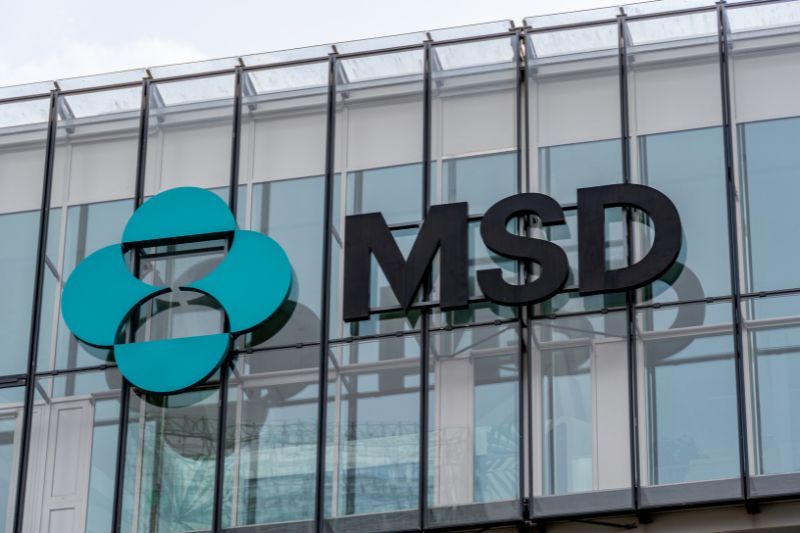 Three pharma giants have now pulled investments out of the UK in an exodus of drug manufacturing.
Three pharma giants have now pulled investments out of the UK in an exodus of drug manufacturing.
Merck (known as MSD in Europe) announced at the start of September that it was scrapping its £1bn London research centre, cutting 125 jobs, with AstraZeneca following suit and pausing its £2bn investment shortly after.
Eli Lilly then proceeded to declare that it would be pausing its London Gateway lab, part of a £279m investment designed to build biotech accelerators with lab space and support for researchers.
The trend is part of a broader shift.
The trickle of money leaving the UK began in 2022 when Novartis sold its Grimsby site and cut more than 200 jobs.
Recipharm followed in 2023 by closing its Queenborough facility and Sanofi reduced the headcount at its Kymab labs in Cambridge the following year.
The situation escalated in February when AstraZeneca scrapped its £450m investment in Liverpool, prompting others — including GSK, Adaptimmune Therapeutics, Verona Pharma and Indivior — to follow suit.
Novartis is also understood to be delaying further UK investments, having steadily scaled back operations during the past decade.
US policies are a significant driver.
Multinationals such as Merck and Eli Lilly are being pushed stateside by the Trump administration’s threat of punitive tariffs, alongside tax breaks and regulatory incentives, effectively forcing R&D and manufacturing to relocate to the US.
For UK drug manufacturers, this highlights the stark challenge of competing against the world’s largest pharma market.
The ABPI report: the good, the bad and the wake up call
The ABPI’s report, published the same day that Merck announced its departure from the UK, served as a stark warning that the country will fall behind in the global race for investment unless something changes.
Although the report did highlight some positives, including Moderna’s new vaccine manufacturing site in Oxfordshire and the UK ranking second amongst its peers in terms of both top universities and research quality, it also emphasised persistent underinvestment, poor patient access, high and unpredictable clawback rates and weak clinical trial delivery.
For UK manufacturing, this translates into a shrinking pool of domestic production sites and talent, raising the risk that any breakthroughs developed in UK labs are then commercialised and manufactured abroad.
Make Britain investable again
To reverse the tide of pharma leaving the UK, Kier Starmer's government would need to offer clear, predictable incentives, as recommended by the ABPI.
Simply pointing to the UK’s “scientific strength” and talent pool is no longer enough.
This includes faster adoption pathways for innovative medicines in the NHS, a more stable pricing and reimbursement framework, targeted support for facilities linking R&D and manufacturing and tax and regulatory incentives to encourage long-term domestic investment.
 Improvements in clinical trial delivery (the government has already committed to reducing trial setup times to 150 days) and patient access are also crucial to give multinational pharma companies the commercial certainty it increasingly demands.
Improvements in clinical trial delivery (the government has already committed to reducing trial setup times to 150 days) and patient access are also crucial to give multinational pharma companies the commercial certainty it increasingly demands.
With the US remaining a behemoth of a market, companies such as Merck, Eli Lilly and others will continue to be pulled stateside, driven by tariffs, tax breaks and regulatory incentives.
UK policy must now compete with that scale and force if it hopes to retain investment.
A focused, long-term industrial strategy could turn the UK’s academic excellence and NHS platform into a differentiator rather than a feeder for overseas manufacturing.
That strategy could depend on empowering the country’s network of mid-sized and emerging CDMOs.
With the right incentives and infrastructure support, these more agile manufacturers could help anchor production closer to home, bridging the gap left by departing multinationals and preserving critical supply chain capabilities.
Whether they have the scale, resources and policy support to do so is now a central question — one we’ll explore in an upcoming feature with leading UK CDMOs.
To conclude
For UK pharma manufacturing, the challenge is clear: without decisive policy action, companies will continue to drift towards the US and other markets, especially with the continued threat of tariffs.
The exodus from the UK threatens not only jobs and sites, but the country's broader industrial capabilities, supply chains and ability to commercialise home-grown innovations.
CDMOs could offer part of the solution if they are given the policy backing and incentives to scale-up.
With targeted support, these more agile organisations could help to fill the manufacturing gap and ensure that innovation discovered in the UK is also produced here.
Without it, the UK risks falling further behind in global pharma manufacturing.
